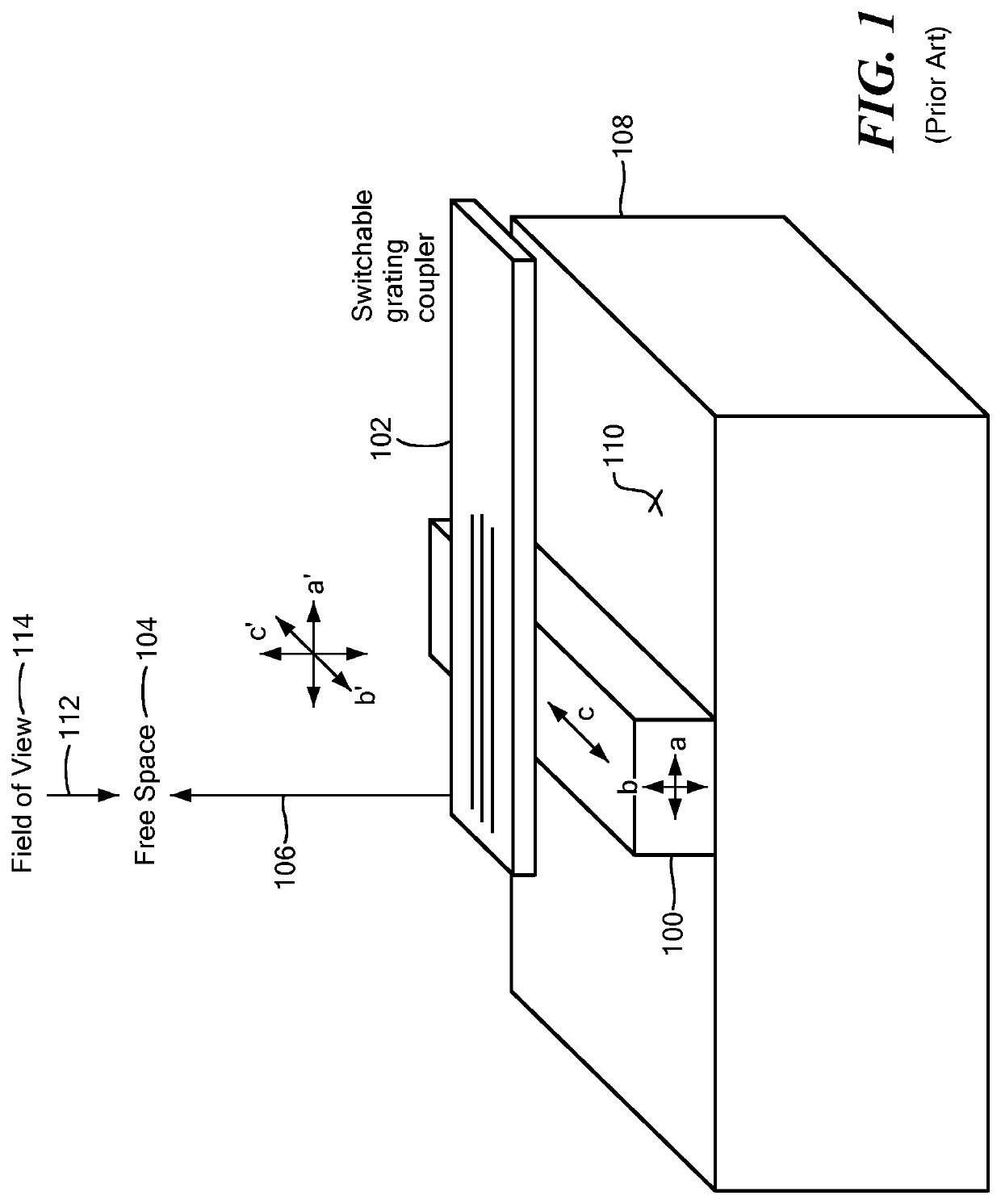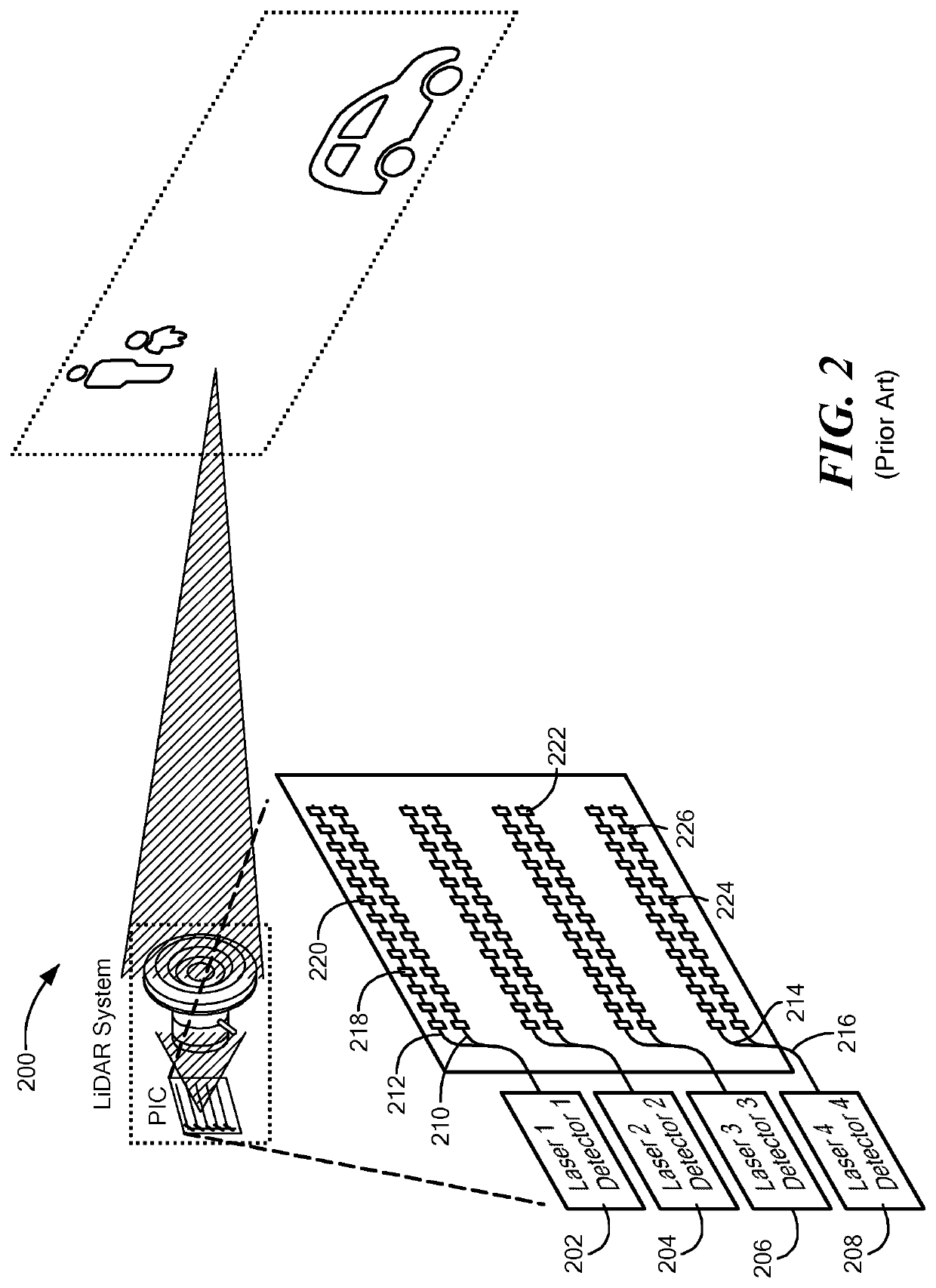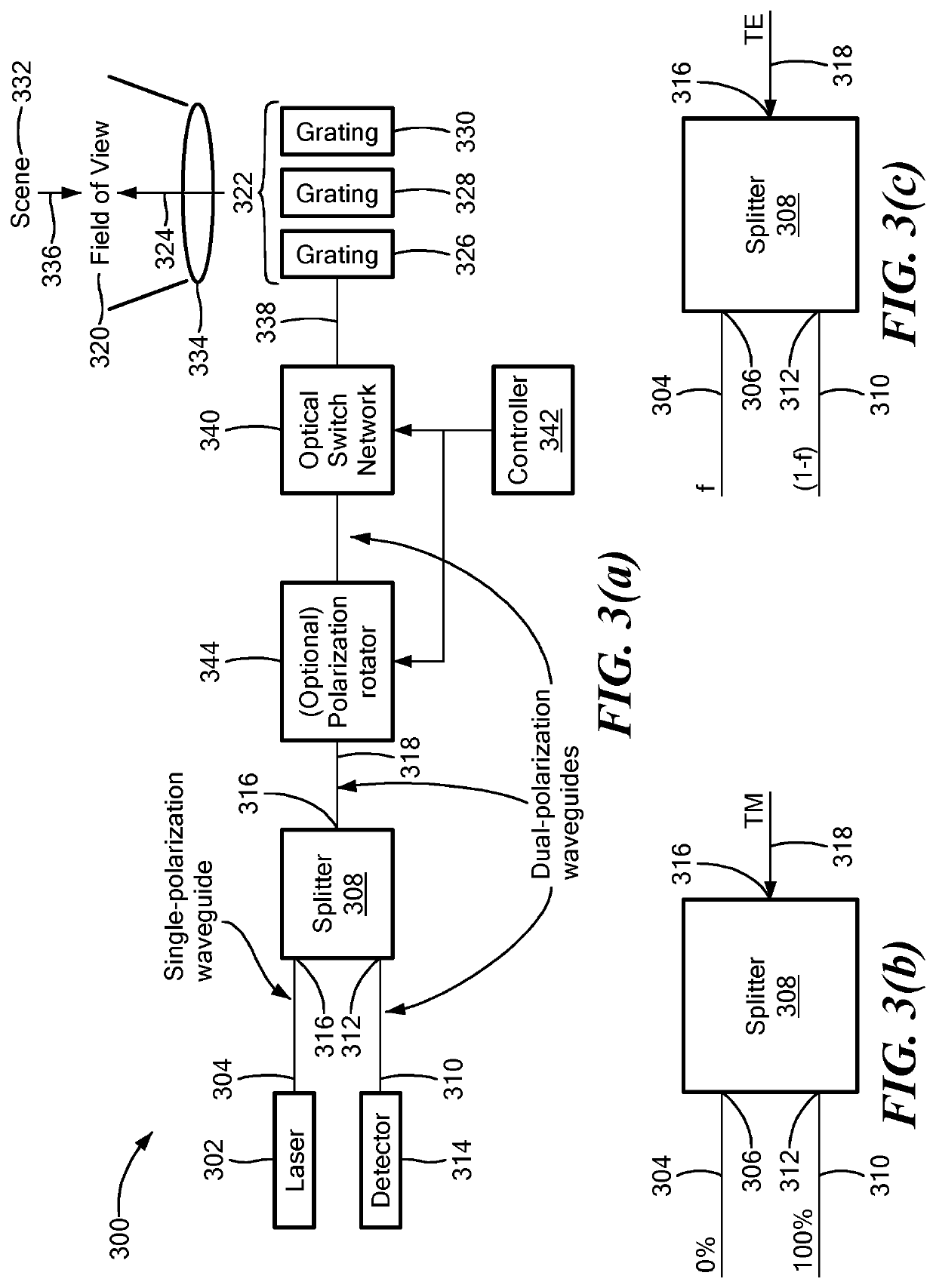Dual-Polarization LiDAR Systems and Methods
a dual-polarization, lidar technology, applied in the direction of reradiation, measurement devices, instruments, etc., can solve the problems of some monostatic light direction and ranging (lidar) systems, the lidar optics may not receive the backscattered light efficiently or at all, and the backscattered light is not evenly distributed
- Summary
- Abstract
- Description
- Claims
- Application Information
AI Technical Summary
Benefits of technology
Problems solved by technology
Method used
Image
Examples
Embodiment Construction
[0004]An embodiment of the present invention provides a LiDAR system. The LiDAR system has a field of view. The LiDAR system includes one or more polarization-based waveguide splitters. Each polarization-based waveguide splitter has a first splitter port, a second splitter port and a common splitter port. A laser is optically coupled to the first splitter port via a single-polarization waveguide. The LiDAR system also includes an array of optical emitters and an objective lens. The objective lens optically couples the array of optical emitters to the field of view. Each optical emitter of the array of optical emitters is optically coupled to a respective unique portion of the field of view. An optical switching network is coupled via respective dual-polarization waveguides between the common splitter port and the array of optical emitters. An optical receiver is optically coupled to the second splitter port via a dual-polarization waveguide. The optical receiver is configured to rec...
PUM
 Login to View More
Login to View More Abstract
Description
Claims
Application Information
 Login to View More
Login to View More - Generate Ideas
- Intellectual Property
- Life Sciences
- Materials
- Tech Scout
- Unparalleled Data Quality
- Higher Quality Content
- 60% Fewer Hallucinations
Browse by: Latest US Patents, China's latest patents, Technical Efficacy Thesaurus, Application Domain, Technology Topic, Popular Technical Reports.
© 2025 PatSnap. All rights reserved.Legal|Privacy policy|Modern Slavery Act Transparency Statement|Sitemap|About US| Contact US: help@patsnap.com



